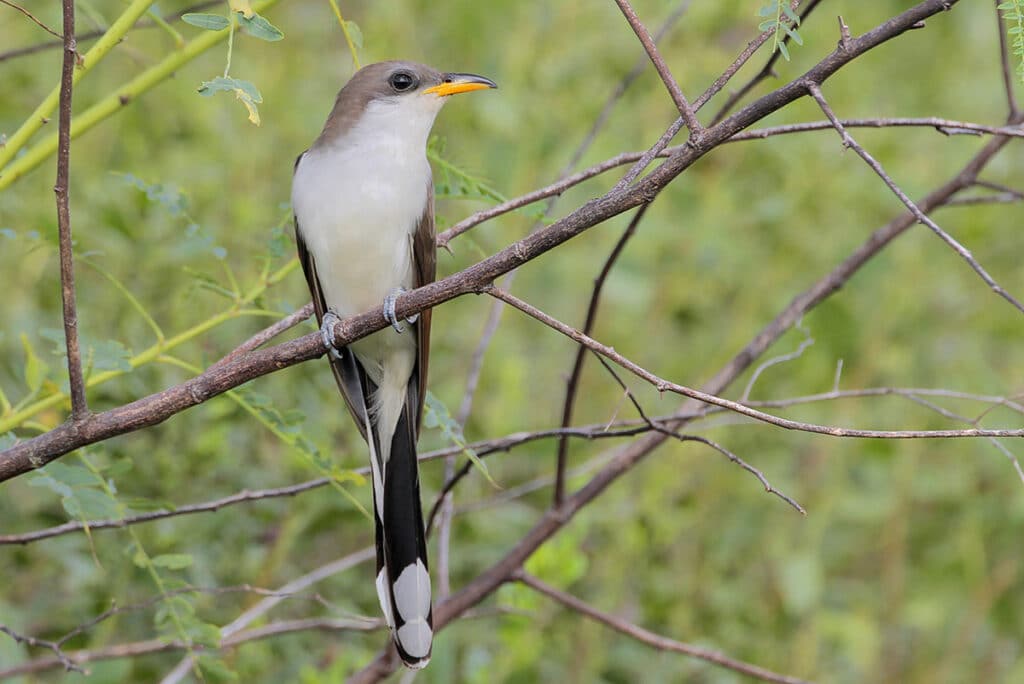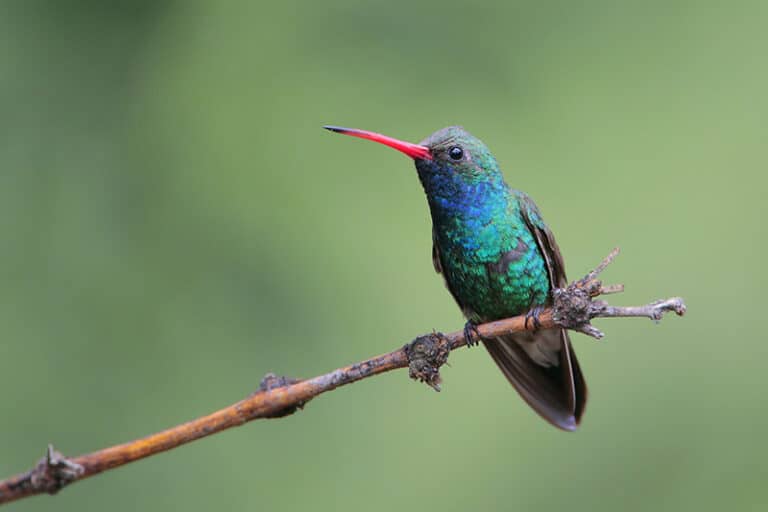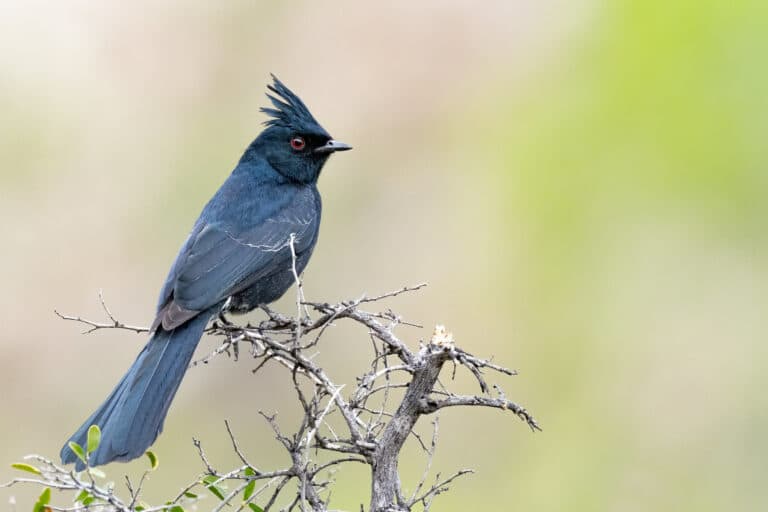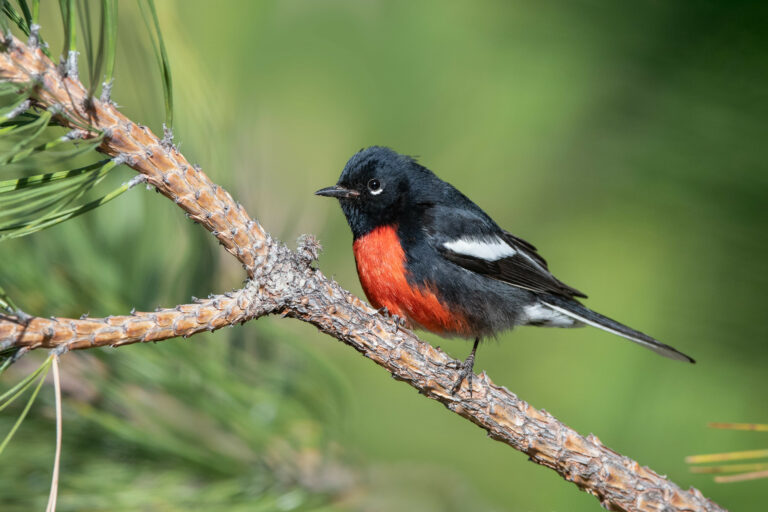You can be forgiven if you’ve never seen a Yellow-billed Cuckoo in Southeast Arizona—they’re very sneaky and only here for a few weeks! These long-distance Neotropical migrants spend winters down in South America arriving in Arizona in June, and they’re already heading south again by late August. For a medium-sized bird with bright white underparts and a long black and white spotted tail, they can be extremely stealthy and difficult to see, even after you’ve heard their often loud and unique ka-ka-ka-ka-kowlp-kowlp-kowlp call. Because they utilize riparian areas with giant cottonwood and willow trees, you can stare up into the thick leaves for quite some time and never see one. Try your luck on the Santa Cruz River near Tubac or on the San Pedro River, but you better go soon! Once started, their breeding cycle is an amazingly quick 17 days from egg laying to fledging of young.
Unfortunately, populations west of the Rocky Mountains are declining precipitously and have been listed as federally threatened since 2014. These “Western” Yellow-billed Cuckoos in Southeast Arizona have been a focus of study for Tucson Audubon since 2015. In partnership with the Coronado National Forest, our surveys helped determine the existence of breeding cuckoos in drainages within Madrean woodlands, which led to new areas being added to the Critical Habitat documentation and recovery plan for the species. Studies are being planned for unsurveyed areas such as the upper Santa Cruz and San Pedro Rivers. Stay tuned, and if you haven’t seen a cuckoo by then, join us on a survey!




